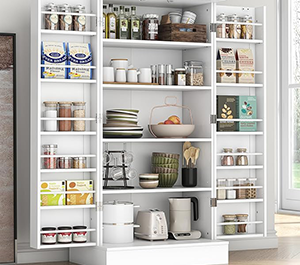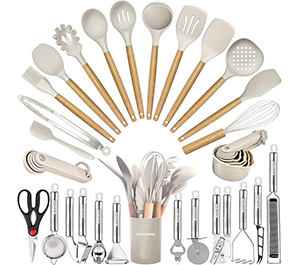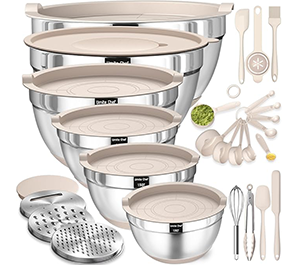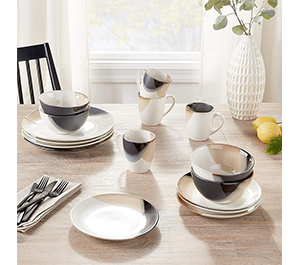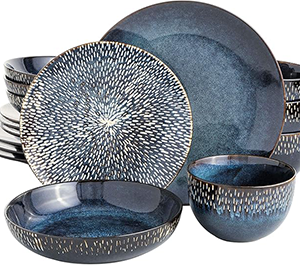Ukrainian cooking offers a genuine connection to culture, to community, and to health. It’s based on humble ingredients like grains, root vegetables, fresh herbs, and meats prepared in soothing, useful ways. For beginners, preparing Ukrainian food is not just a question of executing instructions it’s a question of embracing a healthy approach to life and connecting with a tradition built on simplicity, taste, and warmth.
This complete guide explores how you can be confident to start your Ukrainian cooking journey. From learning the essential pantry staples and being aware of the fundamental techniques to preparing delicious, authentic meals in your home, this article is your step-by-step guide to easy, delicious, and simple Ukrainian cooking for beginners.
Why Ukrainian Cuisine is ideal for beginners
Ukrainian cuisine is meant to be easy, comforting, and expandable. For a beginner cook, this type of food has an easy entry point without sacrificing nutrition or taste.
- Low-ingredient, high-flavor meals: Ukrainian dishes are generally prepared with low-cost, easily accessible staples such as potatoes, onions, carrots, and cabbage. These are supplemented with generous flavorings when served with common herbs like dill, parsley, and garlic.
- Healthy balance and comfort: Meals mostly have a healthy balance of protein, fiber, and wholesome carbs, ideal for families and individuals looking for nourishing, comforting meals.
- Flexible and forgiving: Soups, stews, and porridges are forgiving recipes with measurements, a great option for those who aren’t yet familiar with precise cooking techniques.
- Time-tested traditions: Classic Ukrainian recipes date back centuries. That means they’ve been perfected to be reliable, reproducible, and easy for the home cook.
Whether you’re cooking for yourself or your entire family, Ukrainian meals provide warmth and wellness in every bite.
Must-have ingredients for the Ukrainian pantry
Before cooking, you’ll need to set up your pantry with a few Ukrainian kitchen essentials. These foundational ingredients will allow you to make a wide range of meals.
Grains and starches
- Buckwheat (Grechka): A gluten-free, high-fiber grain used in porridge and pilafs.
- Rice: Used in plov, soups, and stuffed cabbage.
- Potatoes: A staple that shows up in nearly every meal.
- Flour: All-purpose flour is used for baking, dumplings, and pancakes.
Vegetables
- Cabbage: Essential for soups, rolls, and salads. Use both fresh and fermented (sauerkraut).
- Beets: The Main ingredient in borscht and vinaigrette salad.
- Carrots and Onions: Base for almost every savory dish.
Dairy
- Farmer’s Cheese: Used in desserts and dumplings.
- Sour Cream: A must-have topping for soups, pancakes, and blintzes.
Proteins
- Chicken and Pork: Most commonly used meats.
- Eggs: Key in baking and binding.
- Herring and Salmon: For salads and cold dishes.
Spices and herbs
- Dill: Signature herb of Ukrainian flavor.
- Bay Leaves, Black Pepper, Garlic: Simple but powerful seasonings.
These basic ingredients can be mixed and matched to make dozens of traditional Ukrainian meals.
7 Easy Ukrainian recipes perfect for beginners
Here’s a curated list of beginner-friendly dishes you can master quickly. Each includes straightforward steps, minimal equipment, and familiar ingredients.
1. Borscht (Beet soup)
Symbolic of Ukrainian cuisine, borscht is comforting, vibrant, and surprisingly simple. It’s a soup of beets, potatoes, carrots, onions, and cabbage simmered in broth. Finish it with a squeeze of vinegar or lemon juice for brightness and a dollop of sour cream and dill. This soup improves over time and is perfect for make-ahead lunches or dinners.
2. Deruny (Potato pancakes)
Crispy and savory, deruny is made with grated potato, onion, egg, and some flour. They’re fried until golden and served with sour cream or applesauce. A good starter dish for breakfast or a light meal.
3. Holubtsi (Stuffed cabbage rolls)
Cabbage leaves are boiled, stuffed with a mixture of ground meat, rice, and onion, and then simmered in tomato sauce. Slightly more involved, this recipe is ideal for batch cooking and freezes exceptionally well.
4. Varenyky (Dumplings)
Created from soft dough and stuffed with potato, cheese, or cherries, varenyky are boiled and topped with melted butter or sour cream. If necessary, use pre-prepared dough. It’s a hands-on dish that’s enjoyable to prepare with family.
5. Chicken plov
Plov is rice cooked with carrots, onions, and spices. Brown the chicken first, then cook it all together in a single pot. Simple, satisfying, and kid-friendly.
6. Grechka with mushrooms
Grechka (toasted buckwheat) simmered with mushrooms and onions in broth is one of the healthiest and most comforting of all Ukrainian foods. It’s protein- and fiber-rich and quick to prepare but so satisfying.
7. Sweet cheese blintzes
Thin crepes are filled with a lightly sweetened cheese mixture and pan-fried until golden. A delicious dessert or brunch dish that you can top with jam, honey, or fresh fruit.
A step-by-step beginner’s Ukrainian cooking guide
Follow this plan to start your Ukrainian culinary journey confidently:
Week 1 – Build Your pantry
Stock up on grains, vegetables, dairy, and herbs
Shop for basics: potatoes, carrots, onions, rice, buckwheat, dill, garlic, sour cream, and farmer’s cheese. Organize your kitchen by meal category: soups, stews, mains, and desserts.
Week 2 – Start with one-dish meals
Focus on soups, casseroles, and porridges
Begin with borscht, buckwheat porridge, or chicken plov. These meals are balanced and simple. Prepare one recipe per day or every other day.
Week 3 – Try batch cooking
Double recipes and freeze leftovers
Make varenyky or holubtsi in bulk. Store uncooked portions in your freezer. This builds confidence and gives you ready-to-cook meals.
Week 4 – Involve the family
Turn cooking into a bonding activity
Let kids stir ingredients or form dumplings. Teach them to say ingredient names in Ukrainian. Cooking becomes fun and cultural.
Common cooking tips for new Ukrainian home cooks
- Use a grater: For vegetables in pancakes, salads, and fillings.
- Don’t skip the dill: It enhances nearly every savory dish.
- Boil and then bake: For dumplings and cabbage rolls.
- Add sour cream: It’s the secret finishing touch to many meals.
- Taste and adjust: Ukrainian food relies on fresh ingredients—seasoning to taste is key.
Tools you’ll need to get started
Ukrainian cooking doesn’t require fancy equipment. Here’s what you’ll need:
- Large soup pot
- Mixing bowls
- Frying pan
- Grater
- Rolling pin (for dough)
- Baking dish
- Ladle and slotted spoon
These tools are likely already in your kitchen and can handle most Ukrainian recipes with ease.
Final Thoughts
Ukrainian cooking guides beginners with its warmth, simplicity, and versatility. These meals are not only filling and affordable but also deeply connected to tradition and family. By mastering a few beginner-friendly Ukrainian recipes, you can begin cooking meals that bring joy, comfort, and nutrition to your household.
You don’t have to learn everything at once. Start with borscht or deruny, build your skills over time, and experiment with fillings, toppings, and herbs. Ukrainian food isn’t about perfection it’s about love, sharing, and nourishment.
Ready to cook your first Ukrainian meal? Pick one recipe, gather your ingredients, and start your journey today.

